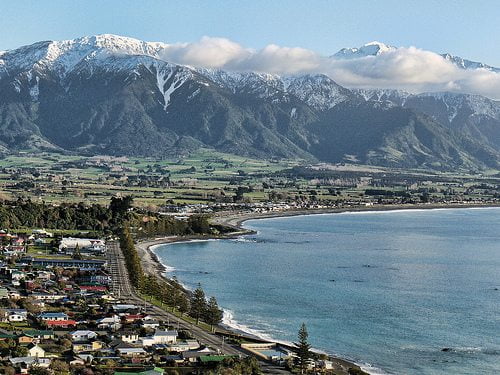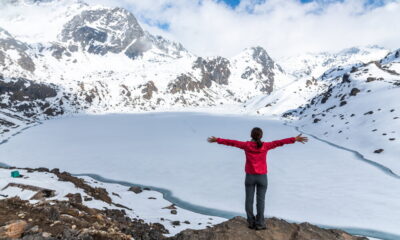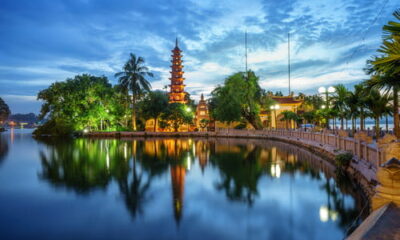

Environment
Ecotourism flourishes when local people are engaged with sustainability
‘Green’ is a term that has been getting on my goat during my travels. Everyone is green; everyone is eco-friendly. Simply by virtue of operating outside – which let’s face it, we all do at some point, even if only when walking from the front door to the car – seems to allow people to classify themselves as such. So when arriving in Kaikoura, an ‘ecotourism’ town in New Zealand, what was I to find?
Ecotourism is a policy following a combination of environmental concerns and tourism, defined by the International Ecotourism Society in 1990 as “responsible travel to natural areas that conserves the environment and improves the wellbeing of local people“.
New Zealand is in a strong position in terms of its link with nature; it prides itself on being “the youngest country on Earth“. As a result, tourists experience a pure environment that has been largely uncontaminated by humans.
A small population has meant the landscape in many parts of the country has gone almost untouched, but efforts to preserve its natural beauty are key in ensuring that it continues to attract large volumes of tourists.
However, ecotourism is unfortunately used interchangeably with the outdoors, and exposing people to these environments is not the same as being a green tourist destination.
With more than 5,000 people visiting Kaikoura on a daily basis during peak season, the infrastructure is the only way that a green community can continue to exist. Pollution in the form of exhaust fumes, erosion from walking, an increase in plastic bags and waste all take their toll, more so than from the everyday activities of living here.
Kaikoura is a town that does allow ecotourism principles to flourish – but only because it allows the permanent population to practice eco-friendly living. One can not exist without the other.
The community was recently awarded a platinum certificate by the environmental benchmarking programme EarthCheck for 10 years of sustainable tourism practice. It continues to prove its ability to remain eco-friendly in areas such as efficient energy management, air quality protection, land use and freshwater resources management – all measures that help the local community and infrastructure.
The local council does not provide a rubbish collection, just weekly recycling, and whilst locals claim different figures in their bragging to me, all say that around 90% of ‘waste’ is not wasted. It is instead recycled, whether at the local plant or at quirky events such as the annual Trash To Fashion catwalk show, where everything from toothbrushes to fishing buoys are converted into clothing.
The council was also the first to employ an environmental officer, and the plastic bag free campaigns, recycling bins on every street, and LoveNZ recycling project all ensure that it is on track to have no rubbish going to landfills by 2015.
Even tiny details, such as washing tour boats with high-pressured water rather than chemical detergent, or packing group lunches for tourists in 100% biodegradable boxes, have been attended to.
Kaikoura does thrive on outdoors activities, particularly marine-based. But the nature of these activities – marine life watching, walking (or tramping), climbing the hills – all suggest that the environment in some ways allows them to visit and engage.
If the town, the air and the sea were horrible and polluted, would rare animals live here, let alone local townspeople? As it is, the sea air is wonderfully fresh, the hills a lush green, and the breath you inhale walking around a heady delight.
In 1992, a new species, the black eyed gecko, was discovered in the Seaward Kaikoura Ranges. Usually shy seals can be found just relaxing on rocks on the peninsula, and dolphins, penguins, albatross and whales all cavort the seas around here. The very rare Hutton Shearwater is being assisted by a relocation project and new breeding reserve, and the forest ranges are monitored closely. These are signs of success, and measures to preserve and persevere with.
Green, outdoors, nature-focused tourism can only exist if the nature and animals are there to see, and are interesting and vibrant enough to see. Their environment must therefore allow for this, and it is local tourists and townsfolk, and eco-friendly measures, that will allow this.
By living an eco-friendly everyday existence, Kaikoura has allowed itself to be an ecotourism destination. Being green is so much more than just a slogan.
Francesca Baker is curious about life and enjoys writing about it. A freelance journalist, event organiser, and minor marketing whizz, she has plenty of ideas, and likes to share them. She writes about music, literature, life, travel, art, London, and other general musings, and organises events that contain at least one of the above. You can find out more at www.andsoshethinks.co.uk.
Further reading:
Sustainable tourism: ‘going green’ doesn’t just mean a splash of colour
Thriving, livable and green, Melbourne walks the talk as a sustainable city
When on a responsible holiday, do as the locals do
































